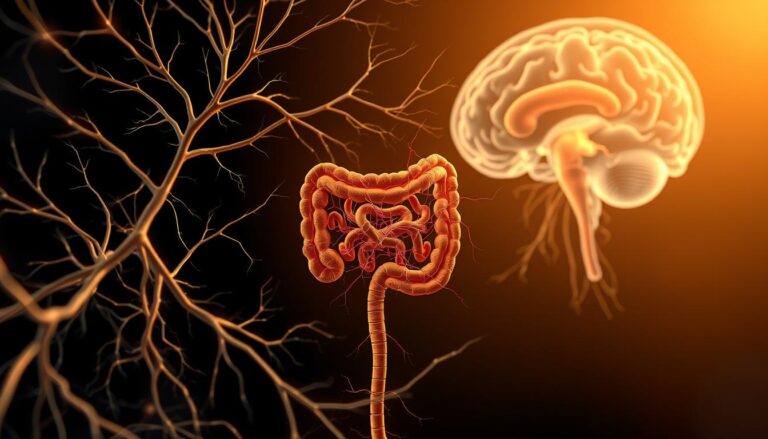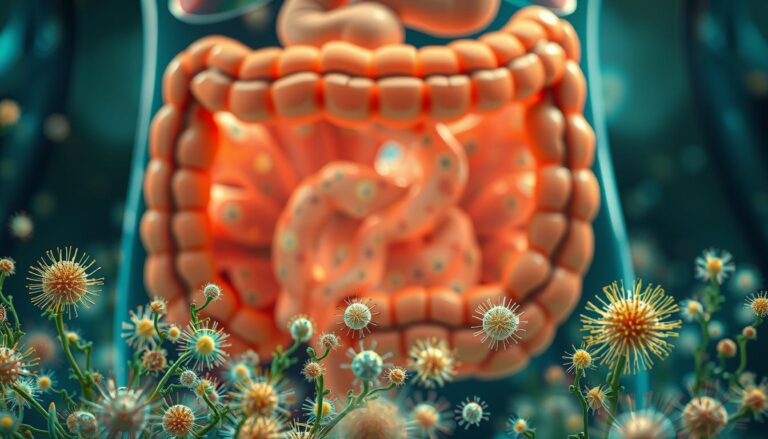Are you dealing with the effects of heavy metal toxicity? You’re not alone. Exposure to pollutants can lead to harmful metals like lead and mercury in our bodies.
These can cause headaches nausea and even damage to organs and the brain.
But there’s good news. There are ways to remove these toxic metals and get your health back. You can try chelation therapy change your diet, and make lifestyle changes.
Key Takeaways
- Heavy metal poisoning is a serious health issue caused by exposure to environmental and industrial pollutants.
- Symptoms of heavy metal toxicity can include headaches, nausea, organ damage, and neurological problems.
- Effective methods for heavy metal detoxification include chelation therapy dietary changes, and lifestyle modifications.
- Proper medical guidance is crucial when undergoing heavy metal detoxification to ensure safety and effectiveness.
- Incorporating certain foods, supplements, and exercise can aid the body’s natural heavy metal removal process.
What is Heavy Metal Toxicity?
Heavy metal toxicity happens when certain metals build up in our bodies. Some metals like zinc and iron are good in small amounts. But too much can be harmful. Other metals like lead mercury and cadmium, are poisonous and have no use in our bodies.
Types of Heavy Metals
Heavy metals can get into our bodies through air water soil, and food. If we’re exposed to them for a long time they can harm us. They can mess with our body’s normal functions and cause serious health problems.
Some common heavy metals that can be harmful include:
- Aluminum
- Arsenic
- Lead
- Mercury
- Thallium
These metals can come from industrial activities and the environment. They can build up in our bodies and lead to health issues.
Chronic and low level exposure to heavy metals can cause adverse health effects and chronic diseases.
Symptoms of Heavy Metal Poisoning
Being exposed to heavy metals like arsenic, cadmium chromium cobalt lead manganese, and mercury can cause serious symptoms. You might feel confused numb or nauseous. You could also faint have stomach pain diarrhea or dehydration.
Long-term exposure can lead to even worse symptoms. These include muscle cramps, numbness, and tremors. You might also experience brain fog memory loss, and trouble speaking.
Heavy metals can harm vital organs too. This can lead to diseases like bladder cancer and heart disease. They can also cause Parkinson’s and damage to the brain and heart.
The symptoms of heavy metal poisoning vary. They depend on the metal, how much you’re exposed to, and for how long. Acute poisoning causes quick and severe symptoms. Chronic exposure leads to slower more hidden effects.

Heavy metal poisoning can have devastating effects on the human body, and it’s crucial to recognize the symptoms early on to seek proper treatment.
To fight heavy metal toxicity we need a full plan. This includes chelation therapy changing what you eat, and your lifestyle. Knowing the neurological effects and organ damage from heavy metals helps protect your health.
Diagnosing Heavy Metal Toxicity
Figuring out if someone has heavy metal toxicity involves several steps. Doctors look at physical signs medical history, and lab tests. They might use blood, urine, and hair tests to check for heavy metals in the body. These tests help understand how much and what kind of metals are present.
Blood Urine and Hair Tests
Blood tests show if someone has recently been exposed to heavy metals. Urine and hair tests show how much has built up over time. But, these tests might miss some metals because they can hide in body tissues.
Doctors might use more than one test to get a full picture. This way they can better understand the problem and plan the right treatment.
| Diagnostic Method | What it Measures | Strengths | Limitations |
|---|---|---|---|
| Blood Tests | Recent exposure to heavy metals | Provides a snapshot of current levels in the bloodstream | May not detect long-term accumulation in tissues |
| Urine Tests | Long-term accumulation of heavy metals | Can reveal chronic exposure over time | May not accurately reflect tissue levels |
| Hair Analysis | Long-term exposure and accumulation of heavy metals | Can provide a timeline of exposure over several months | May be influenced by external factors, such as hair products |
Using different tests together helps doctors understand heavy metal toxicity better. This way, they can create a treatment plan that meets the person’s specific needs.
How do you flush metal out of your body?
Flushing heavy metals from your body involves changing your diet taking supplements, and sometimes medical treatments. Foods like cilantro garlic spirulina, and chlorella can help. They have strong chelating properties that bind to and remove toxic metals.
Eating more dietary fiber, sulfur-containing compounds, and antioxidants helps your body detox naturally. For example lemons rich in Vitamin C, turn toxins into a form that’s easy to get rid of. Also flax hemp, and chia seeds are full of omega-3 fatty acids and fiber. They help clean your colon and liver.
| Natural Remedies for Heavy Metal Detoxification | Mechanism of Action |
|---|---|
| Cilantro | Effective in reducing the build-up of toxic metals like mercury and lead in the body |
| Garlic and Onions | Rich in sulfur, help detoxify the liver from toxic metals like lead and arsenic |
| Flax and Chia Seeds | Contain omega-3 fatty acids and fiber, assist in colon detoxification |
| Vitamin C-rich Foods | Act as antioxidants against damage from metal toxicity |
For severe heavy metal poisoning, doctors might use chelation therapy. This therapy uses medicines to help remove toxic metals. But it should only be done under a doctor’s care because of the risks.
Mercury lead, and arsenic were found to be at high levels in the author’s body based on a common hair sample test.
By making dietary changes taking specific supplements, and sometimes getting medical help you can flush metals out of your body. This supports your health and well-being.

Read more: Detox Water Health Benefits and Myths
Chelation Therapy
Chelation therapy is a treatment for heavy metal toxicity. Chelation therapy uses chelating agents to remove heavy metals from the body. It can be given intravenously or orally especially for lead mercury or iron poisoning.
Chelating agents bind to heavy metals helping to remove them through urine. This treatment is effective for severe cases but must be closely monitored by a healthcare provider. Risks include low blood pressure, kidney damage, and serious complications.
Chelation therapy is FDA-approved to treat metal poisoning only. Research has not provided enough evidence to support the use of chelation therapy for conditions like autism, Alzheimer’s disease, or heart disease.
The American Academy of Pediatrics says there’s no proof that chelation therapy works for autism. It may even be harmful, with one child dying after it.
Side effects of chelation therapy include burning at the IV site, fever headache nausea, and vomiting. It can also remove important metals like calcium copper, and zinc.
Chelation products are not for home use and need a doctor’s prescription. If you have heavy metal toxicity talk to a healthcare professional about the best treatment.
Dietary Modifications for Heavy Metal Detox
Medical treatments are not the only way to detox from heavy metals. Eating the right foods can also help. Some foods can pull heavy metals out of your body. Others might add to the problem. Eating whole nutrient-rich foods and avoiding contaminated ones can help your body detox naturally.
Foods to Eat and Avoid
To improve your detox diet add these foods:
- Cilantro It can bind to mercury, lead, and cadmium, helping to remove them.
- Garlic Its sulfur compounds boost glutathione a key antioxidant for getting rid of heavy metals.
- Wild blueberries They’re full of antioxidants that help neutralize harmful free radicals and support detox.
- Lemon water The citric acid in lemons helps flush out heavy metals, and staying hydrated aids detox.
- Spirulina and chlorella These algae can bind to and remove heavy metals from your body.
- High-fiber foods Chia seeds flaxseeds, and cruciferous veggies help get rid of heavy metals through digestion.
But, it’s also key to avoid certain foods that might increase heavy metal exposure:
- Rice: Some types can have high levels of arsenic a toxic heavy metal.
- Larger fish and seafood Fish like tuna, swordfish, and shark have more mercury because they eat other fish.
- Processed high fat foods These might have heavy metals from industrial processes or pollution.
Eating a diet rich in foods that help detox and avoiding those that might harm can support your body’s detox efforts. This approach can lead to a healthier heavy metal-free life.

Supplements for Heavy Metal Detoxification
Specific supplements can help the body get rid of heavy metals. They include chelating agents antioxidants, and probiotics. These work together to remove heavy metals from the body.
Chelating Agents Modified citrus pectin, alpha lipoic acid, and selenium are good at binding heavy metals. They make it easier for the body to get rid of lead mercury, and cadmium.
Antioxidants: Glutathione and vitamin C protect cells from heavy metal damage. They neutralize free radicals and reduce oxidative stress.
Probiotics: Some probiotics help remove heavy metals through digestion. They support gut health and help with detoxification.
Consult with a healthcare provider before taking any supplements as they can interact with medications and may not be appropriate for everyone particularly in cases of severe heavy metal toxicity.
Remember it’s key to talk to a doctor before adding supplements to your routine. They might not work well with your meds or be safe for everyone, especially with severe poisoning.
| Supplement | Mechanism of Action | Potential Benefits |
|---|---|---|
| Modified Citrus Pectin | Chelating agent that binds to heavy metals | Facilitates the removal of lead mercury and cadmium from the body |
| Alpha Lipoic Acid | Chelating agent and antioxidant | Protects cells from oxidative damage caused by heavy metals |
| Selenium | Chelating agent and antioxidant | Supports the body’s natural detoxification processes and immune function |
| Glutathione | Antioxidant | Neutralizes free radicals and oxidative stress caused by heavy metals |
| Probiotics | Bind to and eliminate heavy metals through the digestive system | Promote gut health and support the body’s natural detoxification mechanisms |
Using these supplements along with a healthy diet and lifestyle can help the body get rid of heavy metals. This supports overall health and well-being.
Lifestyle Factors
Exercise and Sweating
Some lifestyle choices can help your body get rid of heavy metals. Exercise and sweating are key. They help remove heavy metals from your body.
Studies show that sweating from exercise can get rid of metals like chromium and lead. Saunas also help by removing metals through your skin. Plus, avoiding heavy metals in the environment helps your body detox naturally.
- Exercise induced sweating can effectively eliminate heavy metals like chromium, copper, cadmium, lead, and zinc from the body.
- Sauna use may help facilitate the excretion of heavy metals through the skin.
- Reducing exposure to environmental sources of heavy metals such as industrial pollution or contaminated water, can minimize the body’s toxic load and support the natural detoxification process.
It can take months, sometimes up to a year and a half, to cleanse the body from all toxins and heavy metals depending on the level of contamination and the individual’s body condition.
Some individuals may experience increased fatigue stomach gas production, and difficulty in concentrating during the cleansing process.

Read more: Burn Stomach Fat Effective Tips and Techniques
Various symptoms may indicate the need for a body cleanse from heavy metals such as hot flashes heart palpitations dizziness insomnia headaches stomach indigestion chills excessive sweating dry skin problems with conception low libido cough diarrhea and more.
Risks and Precautions
When trying to remove heavy metals from the body it’s important to be careful. Chelation therapy in particular carries significant risks and should only be performed by medical professionals using approved medications. Using unapproved chelation therapies or over the-counter detox products can be dangerous and even life-threatening.
Trying to detox without a doctor’s help can cause serious problems. This includes low blood pressure kidney damage, and even organ failure. It’s also important to be cautious of claims about dietary supplements or alternative treatments for heavy metal toxicity. The science behind these claims is often limited. Always talk to a healthcare provider before starting any detox plan.
Children are particularly vulnerable to the effects of heavy metals, given their developing bodies making them more susceptible to harm. Prolonged exposure to heavy metals can lead to cumulative effects worsening health issues over time. Metals like cadmium can stay in the body for years causing chronic health problems.
Eating foods like garlic and onions, and those high in fiber, can help with detoxification. But, these should be used with medical guidance, not as a replacement for professional treatment.
Consultation with a healthcare provider is essential for developing a safe and effective heavy metal detoxification plan.
It’s crucial to know the heavy metal detox risks, chelation therapy dangers, unapproved treatments, FDA warnings, and potential heavy metal toxicity complications when considering detoxification. Ignoring these precautions can have serious, even life-threatening consequences.
Conclusion
Getting rid of heavy metals in the body is key to staying healthy. Eating right, taking certain supplements, and changing your lifestyle can help. But if you have a lot of heavy metals you might need medical help like chelation therapy.
It’s very important to talk to a doctor before starting any detox plan. The wrong treatment can be very harmful. Working with a healthcare provider ensures a safe and effective way to remove heavy metals.
By using proven methods, you can get rid of heavy metals and feel better. Knowing the dangers and how to treat them helps you make smart choices. This way, you can protect your health and reduce the harm from heavy metal poisoning.





